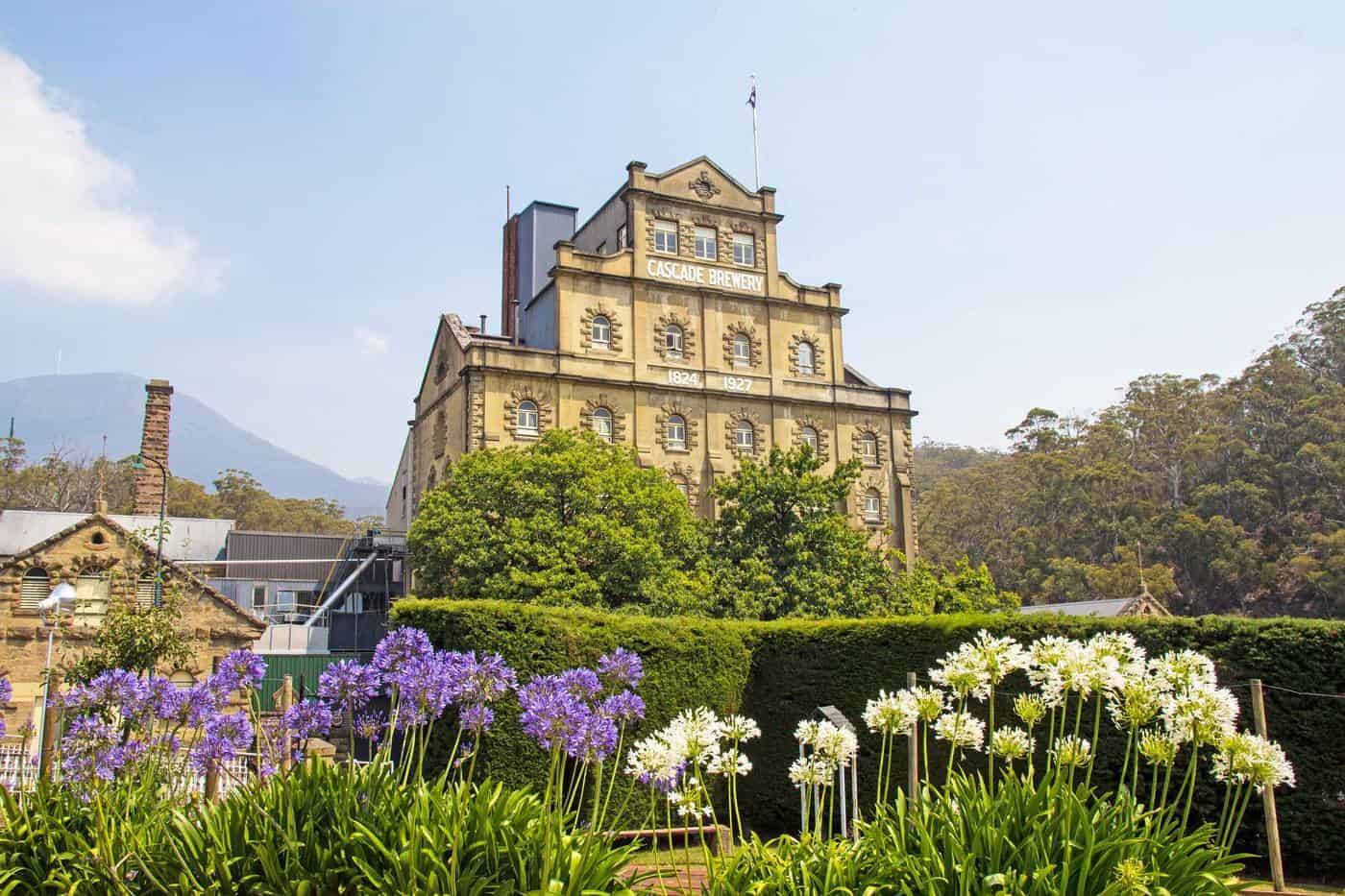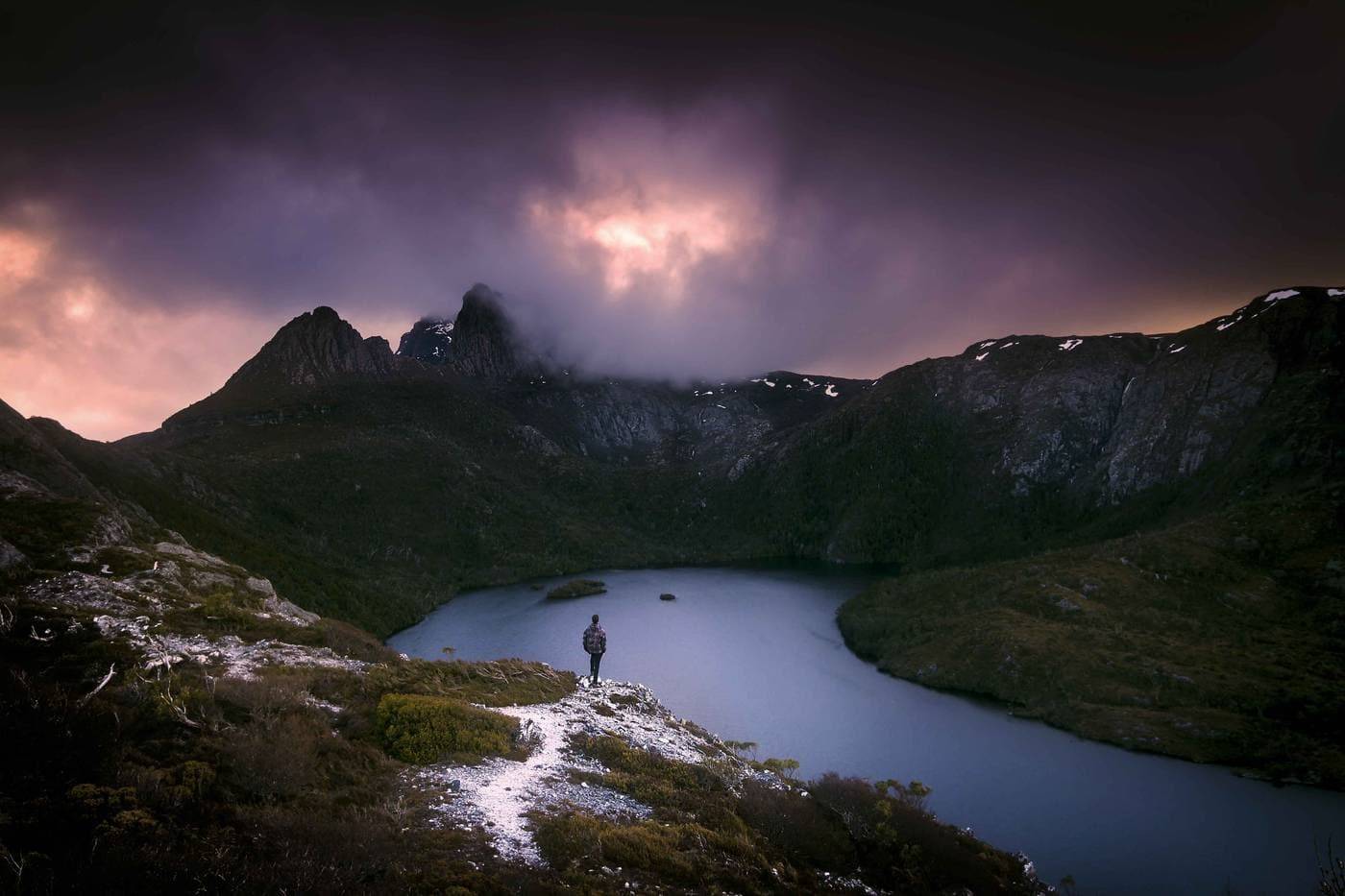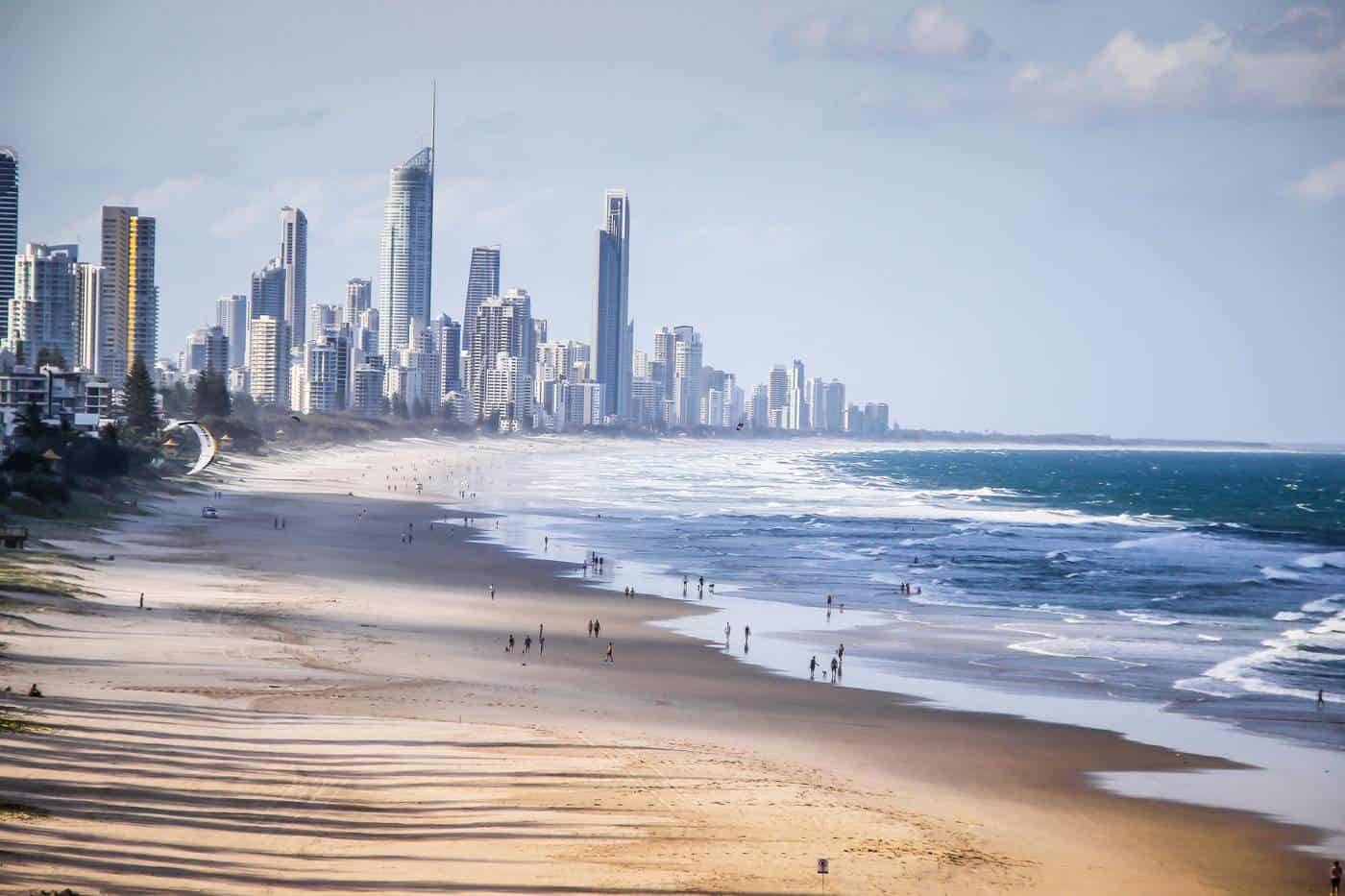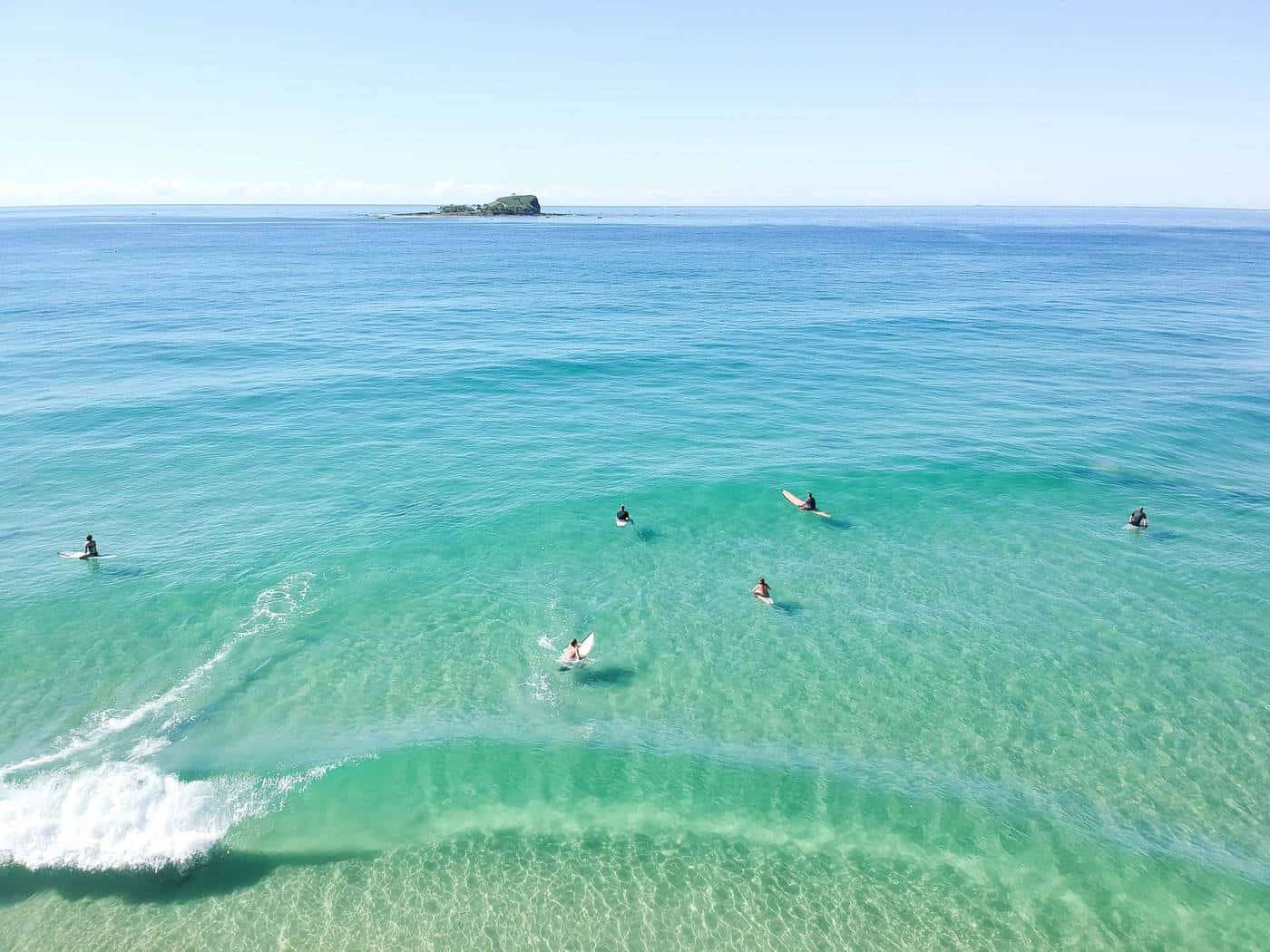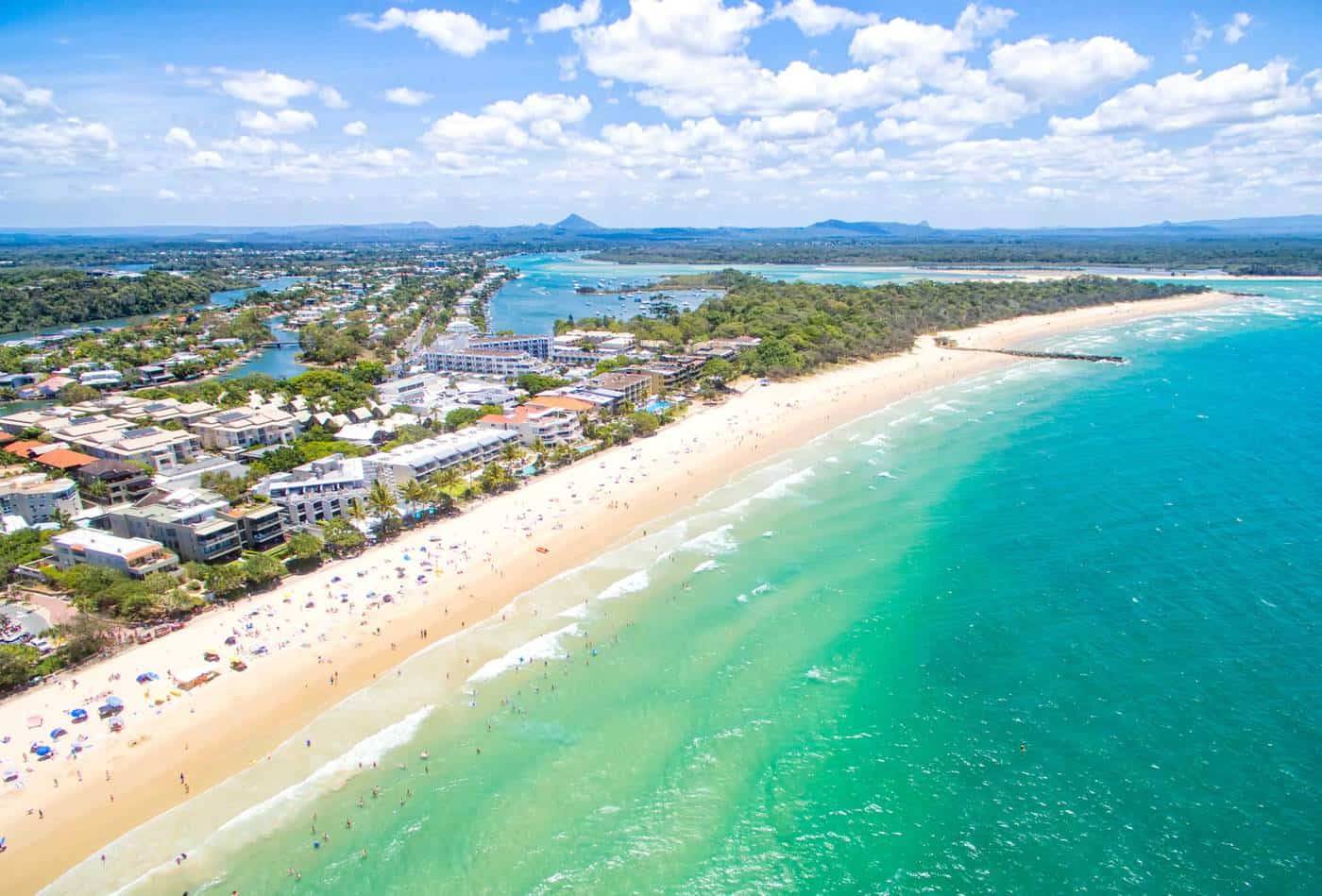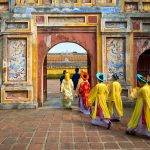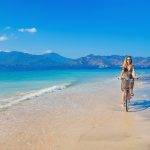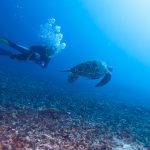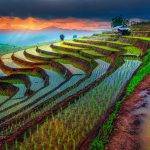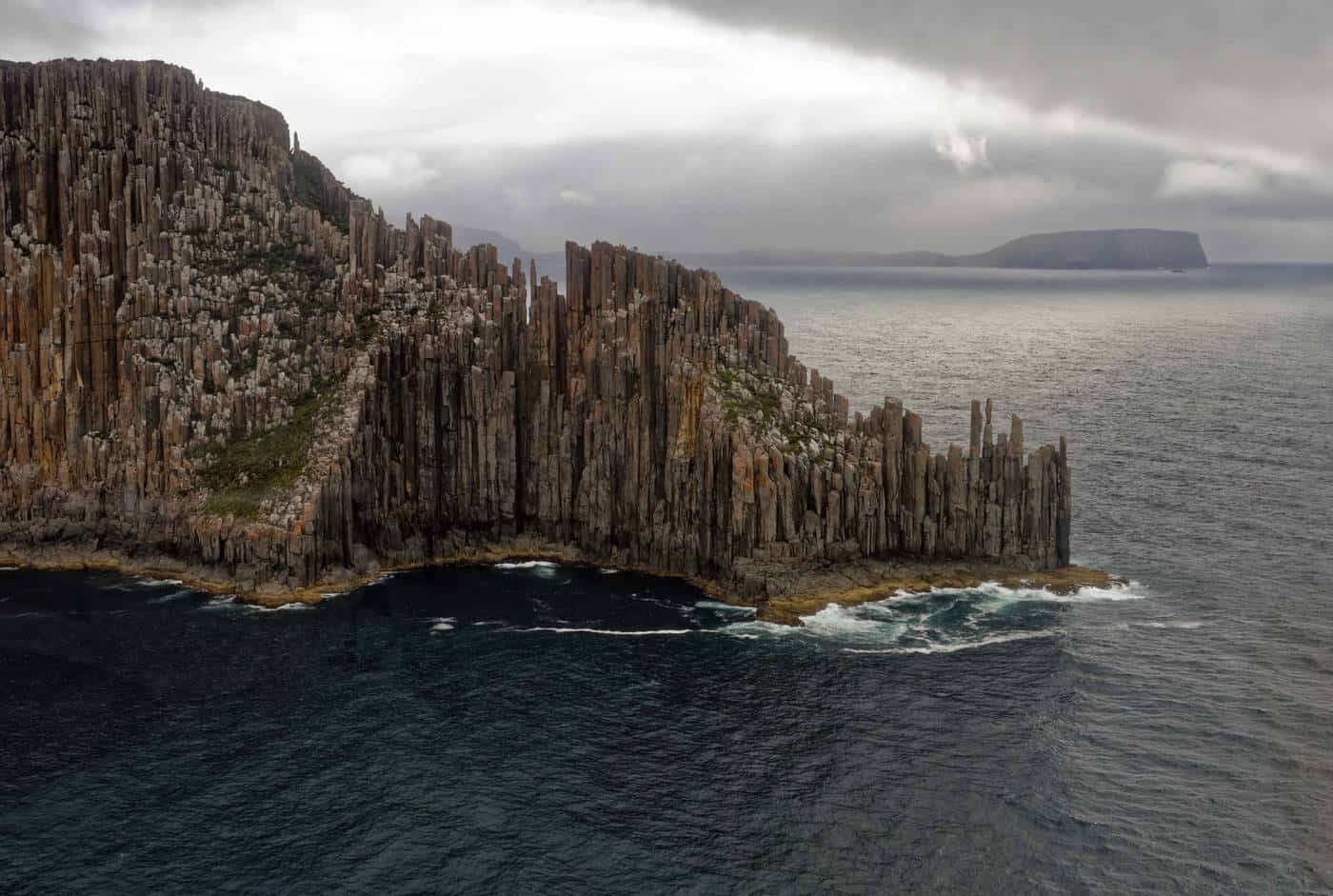
SOUTHERN TASMANIA – THE TALES OF CONVICTS
The capital city of Tasmania – Hobart, is the second oldest in Australia, and it is a place where many stories ended, yet many others began. Founded in 1803 and given a marvellous setting that can be hardly found elsewhere on earth, the town offers an excellent historical heritage, aesthetic value and alluring nature.
Hobart is also the gateway to most of the island`s attractions, where Tasman Peninsula, Huon Valley, Brunny Island and Maria Island surely are some of the highlights.

TASMAN PENINSULA
The Tasman Peninsula reaches far out to the Southern Ocean, and it is some of Tasmania`s most accessible and most visited tourist destinations. It is literally stuffed with attractions of all sorts. From great history to natural splendour, there is much to encounter; virgin beaches, spectacular views, abundant bushwalking and camping options. Visitors can enjoy well-developed tourist infrastructure, with ample accommodation, restaurants, tour and cruises.
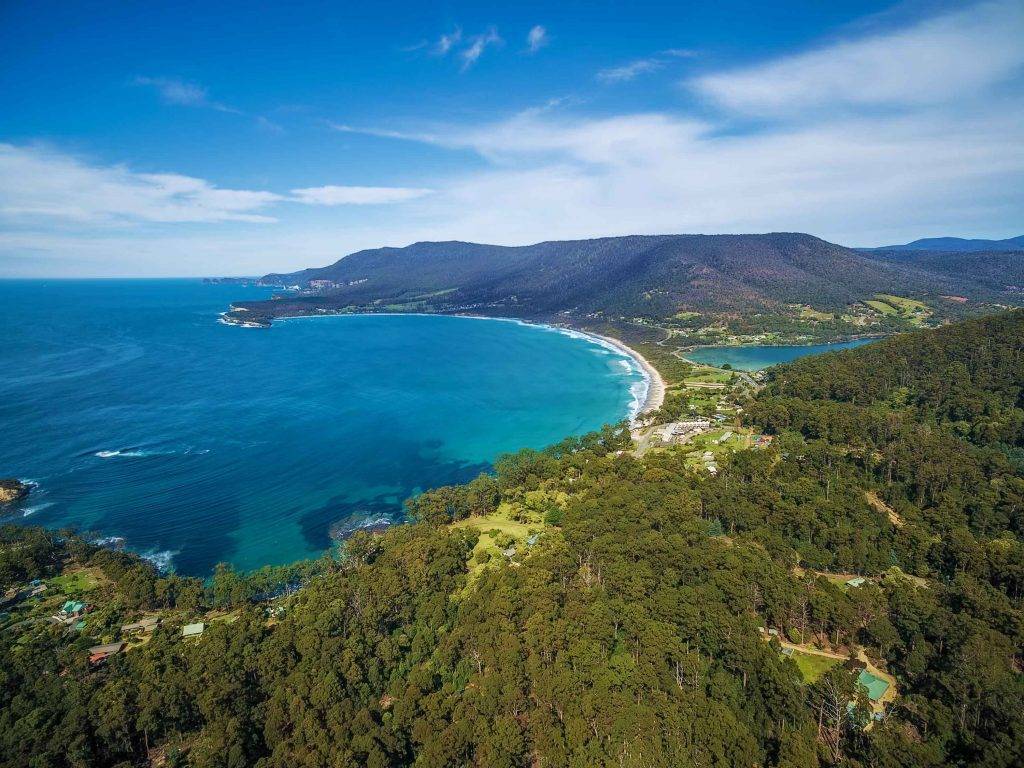
At Dunalley Tasmania`s only human-made canal ‘East Bay Neck’ separates the mainland from the peninsula or so to say ‘an island.’ With some of the finest coastlines on the island, the peninsula boasts impressive dolerite cliffs, long sandy beaches and gentle shorelines.
Tessellated Pavement – a remarkable coastal platform with a rectangular jointing pattern embedded into it, Tasman Arch, Tasman Blowhole and the Devil`s Kitchen – all coastal cliff erosion features. Other stunning sites are the nearby Waterfall Bay and Remarkable Cave.

THREE CAPES TRACK
The celebrated Three Capes (Cape Hauy, Cape Pillar and Cape Raoul) made it to many magazine covers, for their unique dolerite formations. Cape Pillar is known for to the highest vertical sea cliffs in the Southern Hemisphere, and Cape Hauy`s Totem Pole & Candlestick are very popular with rock climbers.
Cape Raoul features jaw-dropping coastal images – perhaps some of the most dramatic seascapes in Tasmania. The windswept Tasman Island is the place to be if you are a fan of big game fishing and wild coastal sceneries.
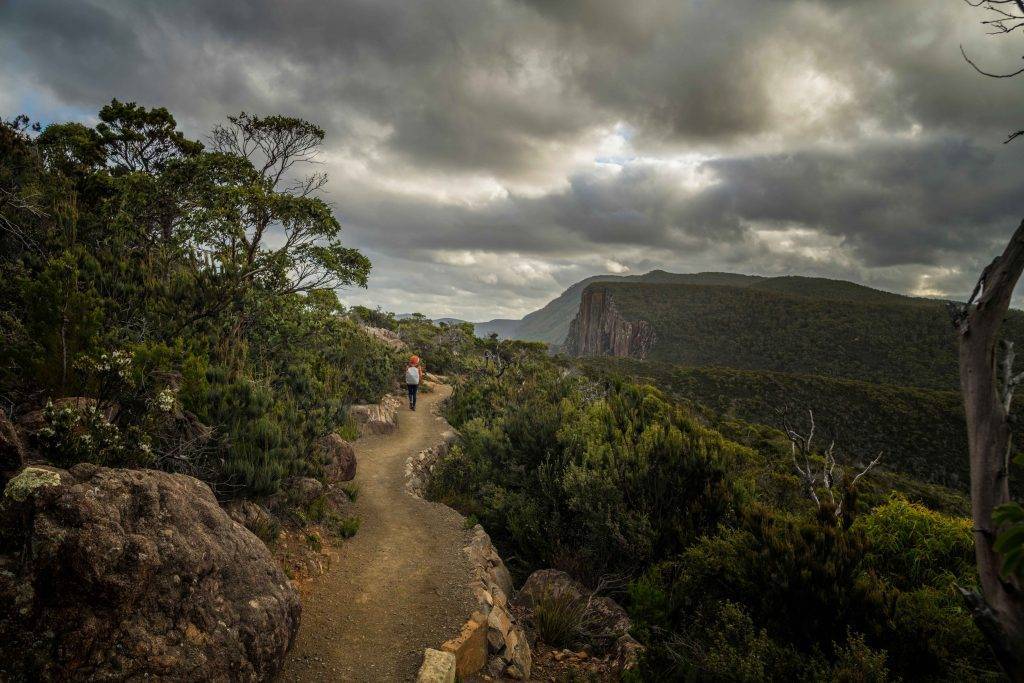
The fit ones should definitely do the Three Capes Track which is considered to be one of Tasmania`s best hikes (48 km), and it can either be done either in full length (3 days) or in sections. There are several one-day hiking options, e.g. from Fortescue Bay to Cape Hauy (8 km return/4 hrs) or from Stormlea Road to Cape Raoul (15 km/5-6 hrs return). NOTE you will need a pass to enter the national park.
Optionally, there are various cruises and boat charters departing daily from Hobart for those who wish to travel in comfort.

TASMANIAN CONVICT ERA
The Tasman Peninsula is a place of vivid convict era history. It is Eaglehawk Neck where one of the most important historic sites stands; a penal station that was built on 100-metre wide isthmus to prevent the convicts from escaping.
Norfolk Bay is home to many other former Probation Stations such as Impression Bay, Cascades and Saltwater River. Eventually, the Tasmanian convict trail leads to Port Arthur – Tasmania`s foremost penal station.

PORT ARTHUR HISTORIC SITE
Port Arthur is well-known as the first penal station in Tasmania and its largest, set up in 1830, where convicts used to be transferred in large numbers during the early colonial era. Nowadays, the old port town is proud of being a tourist hotspot.
With ruins of the colonial penal settlement, much-feared convict coal mines and Saltwater convict probation station with underground cells, a burial ground, The Isle of Death and a semaphore tower, the old port town is on a bucket list of every visitor.
The highlight is the Port Arthur Ghost Tour, where you experience a fascinating and often provoking history blended with absorbing scenery at every turn.
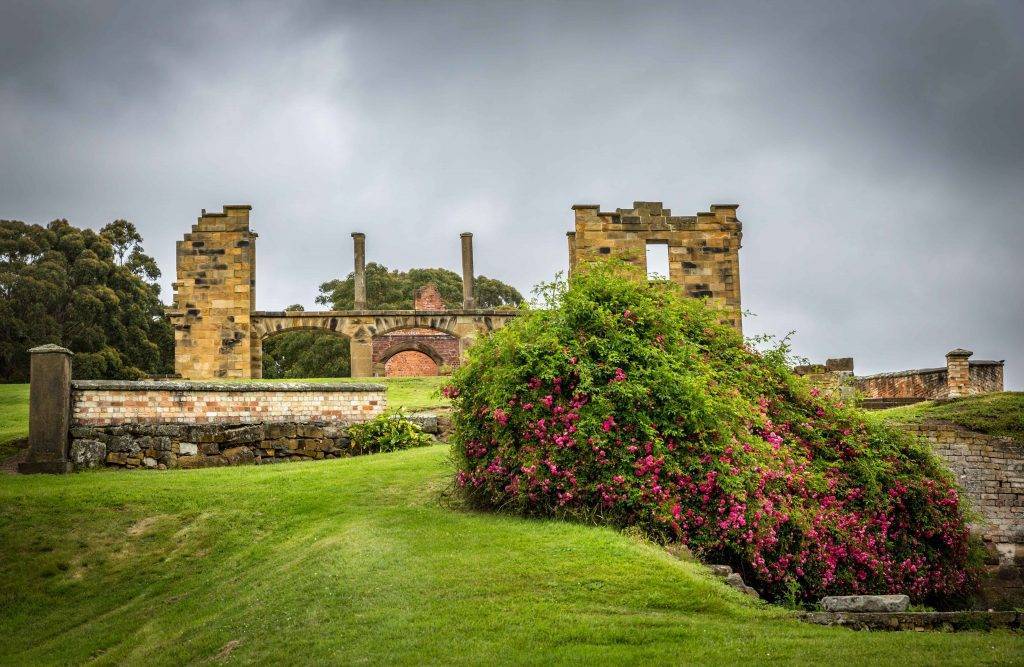
TASMANIAN CONVICT TRAIL (SELF-DRIVE)
Visitors can either book a tour or self-drive (rental vehicles available in Hobart) an engaging circuit trail around the most important penal and probation stations. Tasmanian Convict Trail starts in Hobart and leads to Eaglehawk Neck, Port Arthur and Saltwater River.
Apart from history, there are gorgeous beaches and coastal views to appreciate, e.g. Barilla Bay (White Beach) and Cascades Bay both great for swimming.
The scenic loop covers the major points of interest in the region, and it can be done within 1-3 days.
There are facilities along the way. For more information go to http://www.discovertasmania.com.au/what-to-do/self-drive/convicttrail

MAJOR ATTRACTIONS IN TASMAN PENINSULA
- Hobart – SEE HOBART
- Tasmanian Convict Trail – book a tour or self-drive through the historic penal settlements and learn more about the colonial era of Tasmania (Eaglehawk Neck-Port Arthur-Norfolk Bay)
- Port Arthur Ghost Tour – discover the ruins of the colonial penal settlement operating until 1877, much-feared coal mines and Saltwater convict station with underground cells, a burial ground, the Isle of Death and a semaphore tower
- Pirates Bay & Fortescue Bay – ideal for boating and big game fishing
- Nubeena – camp at one of the pristine beaches of the Barilla Bay and swim at the gorgeous White Beach
- Eaglehawk Neck – explore the natural wonders of Tasman peninsula: Tessellated Pavement, Tasman Arch, Tasman Blowhole and the Devil`s Kitchen (great bushwalking from Devil`s Kitchen-Waterfall Bay-Camp Fall, 3 hrs return)
- Cape Hauy – take a full-day hike to find the impressive Totem Pole & Candlestick (walk from Fortescue Bay to Cape Hauy, 8 km return/4 hrs).
- Cape Pillar – take a boat tour to the highest vertical sea cliffs in the Southern Hemisphere
- Cape Raoul – walk from Stormlea Road to Cape Raoul (15 km/5-6 hrs return) and enjoy some of the most staggering views in Tasmania
- Tasman Island – book a sailing cruise from Hobart to search around the breathtaking coastline of Tasman Island and try some tuna fishing in the rough waters of the Tasman Sea

THE CHANNEL DISTRICT
HUON VALLEY
Southwest of Hobart, there is a beautiful Huon Valley – the centre of a celebrated apple-producing area exporting the fruit worldwide. Juicing, bottling, drying and cideries grew up around the orchards, and the industry earned Tasmania its name as ‘Apple Isle.’
Not only fruit but also Atlantic salmon and crayfish farms attract visitors from every corner of the world. The picturesque images of the Huon Valley and the southern alpine landscape in the Hartz Mountains are topped up with the scattered European-style settlements.
While Huonville is the apple town, Cygnet is known for wineries, craft shops, and art galleries. The historic New Norfolk features farms, hop plantations, and lovely breweries, and so-called oust houses – rare buildings used to dry hops for making beer.
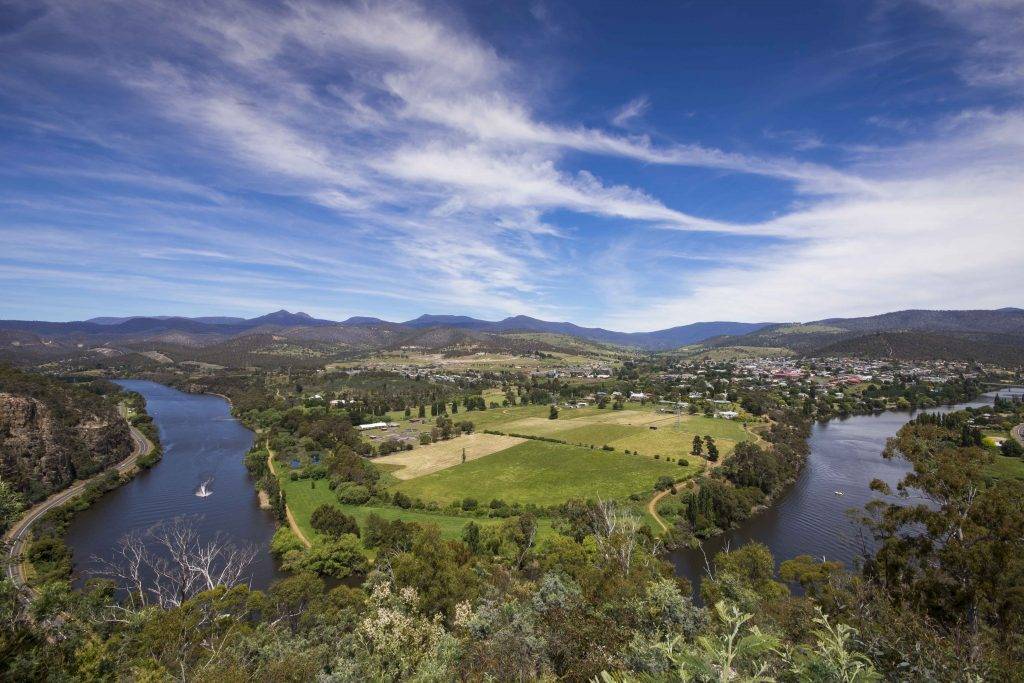
Geeveston is the access point to the Tasmanian Heritage Area – the Hartz Mountains. Glacial lakes, rugged gorges, deep valleys, pristine rivers and superb mountain scenery – all that creates good conditions for outdoor activities. The Hartz Peak Track, Lake Esperance and Tahune Airwalk are absolute must-dos!
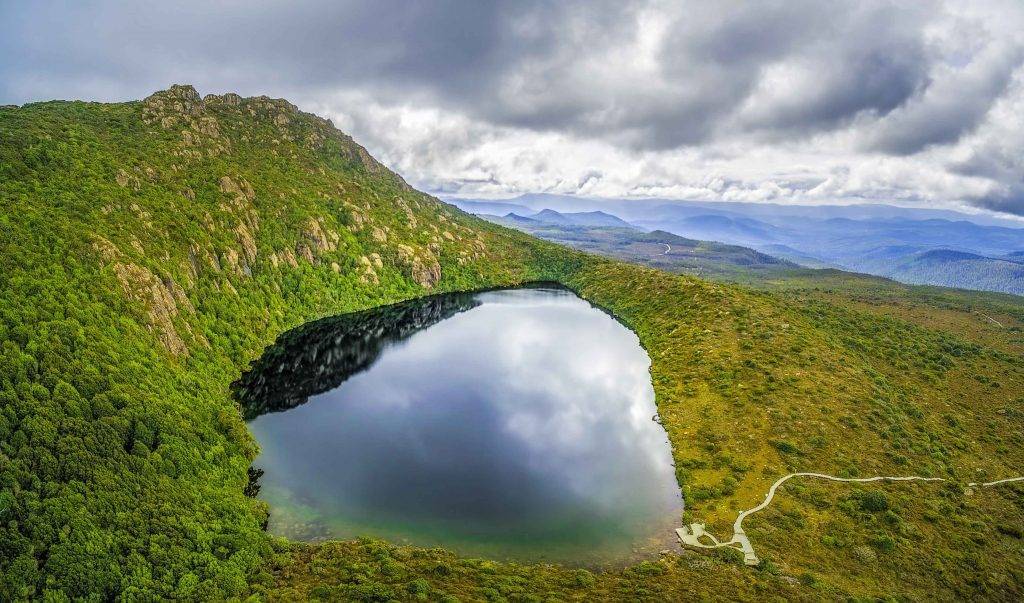
Southport is the southernmost township of Australia, and it earned a nickname the “Mussel Bay.” The port was used by sealers and whalers back in the old days, and today it is a gateway to some of the most remote, yet most immaculate beaches and recreational areas on the island, accessible by 4WD.
Pigsties Bay, Recherche Bay, and Rocky Bay/Cockle Creek are popular with fishermen, pearlers, and sailors.

BRUNY ISLAND
D`Entrecasteaux Channel is one of Australia`s loveliest waterways, dividing Tasmania mainland from the elongate Bruny Island – Tasmania in microcosm, ranging from the dry eucalypt-wooden north to the damp hilly forests in the south.
This ‘two-in-one’ island is a double island joined by a long narrow sandy strip, called Neck. It is an extraordinary view which creates an optical illusion from the Neck Lookout when the sea-level on one side seems higher than on the other one (accessible by car).

Adventure Bay is a relaxing place with a sheltered beach, ideal for swimming and walking. There is a fabulous track to the Penguin Island, accessible at low tide only (Fluted Cape, 2-3 hrs return).
Cloudy Bay is known for rough seas, surfing, and camping, but it also has great walks (East Cloudy Head – 4 hrs return).
The South Bruny National Park is a paradise for nature lovers and hikers. Cape Bruny Lighthouse is the second oldest in Australia, and it stands in the very south of the island, offering impressive views (Luggobine Circuit, 90 min return).

MARIA ISLAND NATIONAL PARK
Maria Island once resounded to the labours of convicts and farmers is now a place of peace, and heaven for fossil lovers, for the limestone cliffs near Darlington is packed full of petrified examples of long-extinct marine life. The national park boasts wildlife, natural wonders, and fascinating history.
The Reservoir Circuit will take the visitors around the major historical sites. Bishop and Clerk mountain track can be completed in 3-4 hours return, and the views will blow your mind away!

The limestone Fossil Cliffs and the sandstone Painted Cliffs at Hopground Beach are not to be missed when on the Maria Islands. Cape Barren Goose is a place to visit if you are an animal lover – wombats, kangaroos, wallabies and even Tasmanian Devils can be spotted here. The bays ofMaria Island are teeming with marine life and astonishing diving and snorkelling locations. Look for whales and seals!

ESSENTIAL EXPERIENCES IN HUON VALLEY AND THE CHANNEL DISTRICT
- Huon Valley – visit the picturesque Huonville and stop by at the Apple and Heritage Museum and pick your own fruit if travelling in the season, otherwise pop in the Willie Smith`s Organic Cidery for some sampling
- Hartz Mountains – hike the Hartz Peak Track (4 hrs return) to enjoy the spectacular vies of Lake Esperance from atop
- Geeveston – walk through the tree canopy on the 48 meters high suspended walkaway, called Tahune Airwalk
- Bruny Island – take a day cruise from Hobart or use the vehicle ferry from Kettering if you self-drive to explore the beauty of the ‘twin islands’ incredibly connected by a narrow sandy isthmus and do not miss out on the deceptive Neck Lookout
- Maria Island – explore the historic site of Darlington Probation Station and its ruins and if you bring/rent a bike ride around the island to view Fossil Cliffs and Painted Cliffs and the Cape Barren Goose before you take a dip in the azure waters of Maria`s Beach
- Southport/Recherche Bay – get lost in the wilderness of the most southern township of Australia and search around to stumble across hidden coves and their waters if boating

WHEN TO TRAVEL
Generally, the best time to visit Tasmania is summer when the temperatures tend to be more pleasant (Dec-Feb). However, this is a very busy time due to school holidays and peak season, and accommodation often gets fully booked.
HOW TO GET THERE
Fly to Hobart (directly or via Melbourne)
For all international flights check out www.momondo.com or www.skyscanner.com
TRAVEL TIP
Hire a vehicle (4WD recommended) and self-drive. The most popular way to travel around Tasmania is to rent a campervan (that saves you money for accommodation and allows more flexibility). There are wonderful campgrounds and holiday parks with good facilities all over the island.
NOTE
To get to BRUNY ISLAND, you will need to catch a vehicle ferry in Kettering (20 min)
To get to MARIA ISLAND take a vehicle ferry from Triabunna (30 min) or Hobart (1.5 hr)

